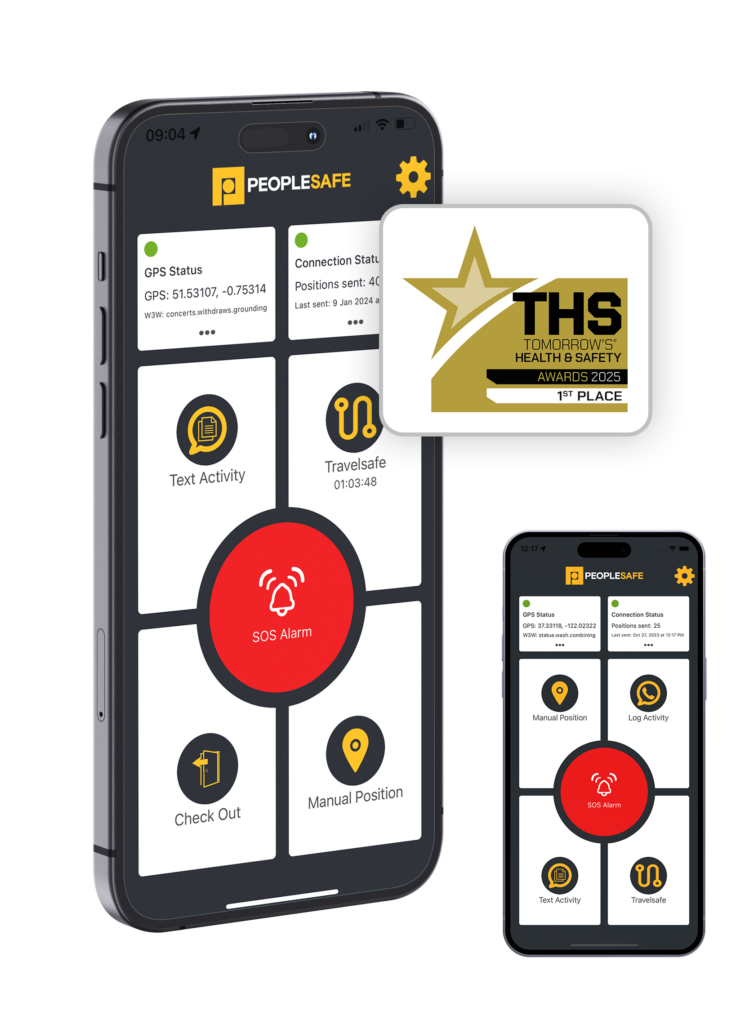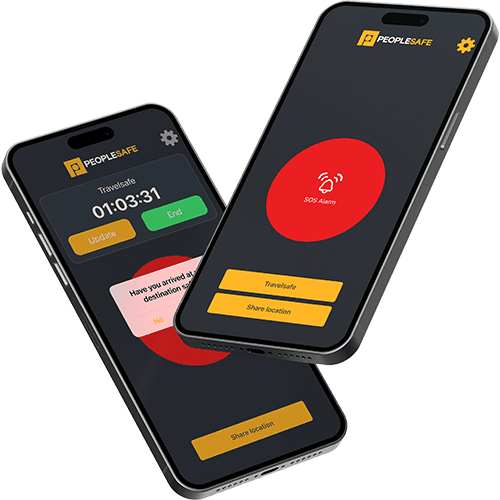What is Vicarious Liability?
Vicarious liability, or imputed liability, is a legal principle that holds one party responsible for the actions of another. In the context of employer-employee relationships, it means that an employer can be held legally responsible for the actions of its employees while they are acting “in the course of their employment”, even if the employer disagrees with the employee’s actions or conduct. This can apply to many situations, ranging from harassment to accidents and injury.
The rationale behind this principle is that the party responsible should have the power to control the actions of the person committing the act. Vicarious liability encourages employers to implement measures to ensure that their employees act responsibly and within the boundaries of the law while carrying out their job duties.
To determine if vicarious liability applies, there are three questions you should ask:
- Has harm been caused?
- Was the harm caused by your employee? A relationship must exist between the employer and the wrongdoer, justifying legal responsibility for the other’s fault.
- Was the employee acting “in the course of employment”? A connection must be established between the employment and the wrongdoing, where the wrongful act must be sufficiently related to the conduct authorised by the employer.
If the answer to all of the above questions was ‘yes’, the employer can be held liable.
This means that the company will be responsible for compensating the victim for the harm that they have suffered. This could include medical expenses, lost wages, fees for pain and suffering, and other damages directly resulting from the wrongful actions of the employee. In extreme cases, the court may also award punitive damages intended to punish the company for the actions of its employees and to serve as a deterrent.
Additionally, in cases where the actions of the employee involve criminal conduct, the company may face criminal charges.
What Does ‘In the Course of Employment’ Mean?
“In the course of employment” refers to the time when an employee is actively engaged in the duties and responsibilities assigned by their employer. This includes activities that are explicitly assigned by the employer as well as tasks that are reasonably connected to the employee’s role. If there is a sufficient link to the work or employment of the offending employee, the employer could be held liable.
For example, if an employee is involved in a work-related task or is on the employer’s premises during regular working hours, their actions during that time are considered to be “in the course of employment.” Additionally, case law has shown that employers can sometimes be liable for incidents outside of the workplace, for example, commuting to and from work or at social events like Christmas parties.

What is the Difference Between Full and Vicarious Liability?
Full liability and vicarious liability are terms used in legal contexts, particularly in relation to personal injury or damages cases. While both involve the concept of legal responsibility, they differ in the parties who are held accountable.
Full Liability:
Definition: Full liability means that a party is held solely responsible for its own actions or omissions that directly cause harm or damage. In a work setting, this is when an employer is directly responsible for its own wrongful acts, or for any wrongful act of an employee expressly authorised by the employer, that causes harm and loss to a third party.
Example: For example, if an incident occurs due to the employer ignoring risks, failing to conduct a suitable risk assessment or failing to implement sufficient safety procedures. This same liability can also apply if they expressly authorise or encourage wrongful or dangerous acts committed by an employee.
Vicarious Liability:
Definition: Vicarious liability, on the other hand, is a legal doctrine that holds one party responsible for the actions of another. For example, an employer being held responsible for the actions of its employees.
Example: If an employee, while acting within the scope of their employment, causes harm to someone else by negligence, the employer may be held vicariously liable for the employee’s actions.
Why is Vicarious Liability Important?
By imposing accountability on employers for the actions of their employees, vicarious liability ensures that individuals harmed by workplace incidents have recourse for compensation, as responsibility is allocated to the party with greater control and resources—the employer.
Additionally, by holding organisations accountable, employers are encouraged to prioritise and enforce robust safety measures, fulfilling their duty of care, helping to prevent negligence, and ultimately contributing to the overall welfare of the workforce.
Where Does Vicarious Liability Apply?
Vicarious Liability mainly applies in relation to health and safety incidents, but it can also be applied to other areas of employment.
- Bullying and Harassment: Vicarious liability may apply when an employee is subject to bullying or harassment. In this instance, employers can be held accountable for failing to prevent or address this behaviour in the workplace.
- Discrimination: Vicarious liability extends to situations involving discrimination in the workplace. Under the Equality Act 2010 it is against the law to discriminate because of age, disability, gender reassignment, marriage and civil partnership, pregnancy and maternity, race, religion or belief, sex or sexual orientation. If an employee discriminates against a colleague or a third party while performing work-related tasks, the employer may be held liable for the discriminatory actions.
- Illegal Activity: If an employee commits an illegal act during the course of employment, vicarious liability may come into play. Employers may be held responsible for the consequences of such actions, particularly if they failed to take reasonable steps to prevent or address the unlawful behaviour.
Can Organisations Be Held Vicariously Liable for Independent Contractors?
In general, vicarious liability is associated with the relationship between employers and employees. However, under specific circumstances, an employer can also be held liable for the wrongful acts of anyone whose role is ‘akin to that of an employee’. This includes independent contractors.
As contractors typically function as independent entities and are accountable for their own actions, business owners rarely control the work or processes taken. This means that any negligence is their responsibility and not the employer’s.
However, there are some exceptions to this rule and whether a company can be held responsible for the actions of a contractor depends on the specific details of the situation. This considers factors such as the extent of control over the contractor’s work, if the actions leading to liability fall within the scope of the contractor’s agreed-upon work and the nature of the working relationship between the company and the contractor. Organisations can also be held liable for a contractor’s negligence if:
- The business hired a contractor who’s incompetent or unqualified.
- The work the contractor was hired for is dangerous.
- The business failed to fulfil a duty it couldn’t legally give to the independent contractor.
It is important to note that there are some non-delegable duties, which means an organisation cannot absolve itself of responsibility by hiring an independent contractor. For example, an organisation may still be held responsible for the safety of its premises, even if it hires an independent contractor for maintenance work.

Case Studies
Cox v Ministry of Justice (2016)
In this case, Ms C, employed as the catering manager at a prison by the Ministry of Justice, sustained an injury during the course of her duties. Ms C was responsible for overseeing the prison kitchen and supervising inmate workers. One day while working, an accident occurred when a prisoner unintentionally dropped a sack of rice onto Ms C’s back, resulting in injury.
In the initial hearing, the claim was dismissed, with the court asserting that the relationship between the prison service and the prisoner did not meet the criteria of an employer-employee relationship. However, the Court of Appeal overturned the decision and asserted that there was a basis for vicarious liability.
Upon further review, The Supreme Court ruled that the MOJ were responsible for the prisoner’s actions. They ruled that as the MOJ were ultimately responsible for providing essential services within the prison and the prisoner was paid a nominal fee for his services, they had a sufficiently close relationship and so could be held vicariously liable for his actions.
The ruling sheds light on the significance of “close connection”, showing that even in unusual work settings, where the employer-employee relationship may be unclear, organisations need to be aware of their level of control and responsibility as they may be held vicariously liable.
Chell v Tarmac Cement and Lime Ltd. (2022)
In a more recent case of Chell v Tarmac Cement and Lime Ltd, the employer was not liable for injuries on a third party caused by an employee playing a practical joke. In this case, Mr Chell was employed by Roltech and worked as a contracting fitter for Tarmac. One of Tarmac’s own fitters, Mr Heath, as a practical joke, detonated two explosive pellets close to Mr Chell. This resulted in a perforated right eardrum, noise-induced hearing loss and tinnitus.
As a result of the injuries, Mr. Chell brought a negligence claim against Tarmac, asserting vicarious liability for Mr. Heath’s actions. The High Court dismissed the appeal, referencing the absence of a ‘sufficient connection’ between Mr. Heath’s prank and his employment, as well as Tarmac’s adherence to health and safety responsibilities.
The Court of Appeal upheld this decision, stating that the risk created by Mr. Heath was not inherent in Tarmac’s business. The court ruled that there was an insufficient link between the employer-employee relationship and the prank, absolving Tarmac of vicarious liability. They also cited that Tarmac’s health and safety procedures were sufficient and nothing more specific could reasonably be expected.
This case reaffirms that organisations cannot be held responsible for wrongful conduct where there is no reasonable connection between the act and the employee’s assigned duties. It also highlights the importance of having sufficient health and safety procedures in place to protect against liability in unforeseen circumstances.
Protecting Against Vicarious Liability
Organisations cannot be held vicariously liable if they have taken all reasonable steps to prevent the act that causes harm. So, to mitigate the risk of vicarious liability in health and safety matters, employers must take proactive steps to identify and mitigate risks as far as reasonably practicable.
While it is not possible to prevent every accident or injury, employers should put policies and procedures in place that mitigate those risks that can be foreseen in advance.
Risk assessments
By conducting and documenting a thorough risk assessment, employers can provide evidence of systematically identifying, evaluating and mitigating potential risks within the workplace. This not only provides a basis for implementing safety measures and training but can be used as evidence to prove that all necessary risks have been considered.
Risk assessments should be updated annually and reviewed each time an incident occurs or whenever new safety procedures are implemented to ensure they stay up to date.
Training
One of the most important ways to prevent incidents and ensure proper conduct is through employee training. Staff who are aware of your safety procedures and company policies, and know how to deal with emergency situations are less likely to behave in a negligent or inappropriate way. Proper training also helps employees to feel safe at work, improving morale, efficiency and productivity.
As well as safety training, you could offer equality, diversity and inclusivity training to improve company culture and ensure employees are aware of their responsibilities under the Equality Act 2010. Regularly updating training programs to reflect changes in your risk assessment is essential to staying proactive and minimising legal risks.
Creating Company Policies
Creating clear and comprehensive company policies is a simple way for organisations to protect themselves against vicarious liability. Well-drafted policies provide a framework for behaviour, outlining expectations and standards that can mitigate the risk of incidents. These policies should cover a range of areas, including workplace conduct, discrimination and harassment prevention, health and safety protocols, and compliance with relevant laws and regulations.
These policies should be communicated effectively to all employees through regular training sessions, employee handbooks, and should be kept in an accessible location. By having policies in place, you can prove that you have actively taken measures to avoid certain actions or behaviours.
Regularly reviewing and updating policies to align with changes in laws and industry standards ensures their continued relevance and effectiveness in safeguarding the organisation against potential liabilities.
Implement an Employee Safety Solution
Implementing specialist solutions, such as Peoplesafe, can be instrumental in protecting employees and supporting an employer’s defence against vicarious liability. By implementing an employee safety service, employees can access 24/7 support from trained alarm controllers who have direct access to the emergency services when required. Our body worn camera for example, can be paired with our SOS app to provide not only evidence but also support from trained professionals.
This provides peace of mind for employees but also provides tools for incident reporting, risk assessments, and real-time monitoring of employees’ wellbeing. Additionally, in legal proceedings, audio recordings of alarms raised to the Peoplesafe ARC can be admissible as evidence.
Investing in specialised tools like Peoplesafe not only demonstrates a commitment to employee safety but also provides a way to proactively manage risks, reducing the likelihood of legal repercussions.
Incident Documentation and Reporting
Maintaining a systematic approach to incident documentation and reporting is crucial for organisations aiming to protect against vicarious liability. Encouraging employees to promptly report any incidents, near misses, or safety concerns allows for these incidents to be addressed and contributes to a positive safety culture. By documenting these occurrences, organisations can analyse patterns and trends, which can be used to implement targeted safety measures. These reports can also be used to update risk assessments, inform training by identifying knowledge gaps and act as evidence of an organisation’s commitment to mitigating risk.







